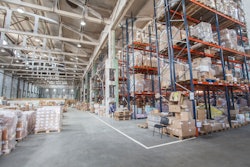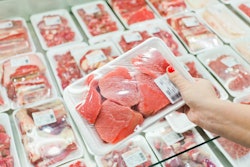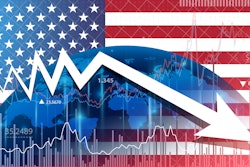
A number of food suppliers are raising their prices to combat inflation amid the rising costs of labor, packaging, ingredients and transportation. Yet the food and beverage industry would be wise to avoid shrinkflation, providing less food for more or raising their own prices too high. The key to maintaining costs? Take a data-driven approach to inflation.
Making decisions based on data can help those in the food and beverage industry keep control over their costs in a number of ways. First, it can help identify areas where they are spending more money than necessary, and how to make essential changes. Secondly, it can help track trends over time, or understand whether current consumer behavior is deviating from long-term trends. And lastly, data can help foodservice operators compare their own performance to competitors, or the industry average, and gain insights into how they can improve operational efficiency.
Given today’s inflationary pressures, the food and beverage industry must incorporate data-focused strategies into their operations to help maintain costs. Here’s how.
Understand inflationary trends
One interesting aspect of inflation, on a macroeconomic level, is that most rely on trailing indicators instead of leading ones to determine inflation levels. For example, the Federal Reserve publishes their inflation metrics a full month after they were measured. For those in the food and beverage industry, relying on data that’s a month old, or more, is far from ideal.
One of the best things an organization can do is look for their own leading indicators for inflationary pressures. Data sources that produce and ingest data continuously provide real-time feedback on prices and inflation.
For example, analyzing shopping cart data (what people are buying, and the prices they’re paying either online or in-person), can give tailored insights down to the SKU level on what consumers are purchasing. This allows for organizations to plan in a number of ways. They can begin to stock up on products that are gaining in popularity, and less on those that aren’t in demand, price their items effectively and even rearrange store layouts to showcase products that aren’t being purchased.
Consider consumer demand
Often overlooked in the inflation discussion is how the change in prices will impact consumer demand and behavior. Inflation itself measures the change in price, but not how that may change consumer’s spending habits. For example, we’ve all witnessed the recent rise in gas prices, but does this mean consumers are driving less, or changing their routes to spend less time on the road?
For the food and beverage industry, it’s critical to understand how inflation affects people’s spending habits. Organizations need to ensure that they don’t go over a tipping point by raising their prices too high and risk pricing out consumers altogether to the detriment of total revenue.
Being able to price and stock products effectively means having a clear understanding of what and how consumers are buying. Pricing is a significant influence on consumer behavior and inflation is making it even more difficult for organizations to get their pricing just right. By understanding how much of an impact inflation has on consumer spending habits, organizations can more easily find the balance between looking after their bottom line, and catering to consumers’ needs.
Understand the root cause
Another way data can be leveraged is to understand what exactly inflationary pressures are caused by. For a food and beverage company, this means knowing whether the change in the price of gas, and therefore rising transportation costs, are making an impact on store shelves, or if the supply chain crisis or labor shortages are to blame.
This enables a company to forecast whether inflationary pressures are long term or short term, and help mitigate the pressure to the extent possible. For example, if gas prices are to blame, an organization can work to change shipping routes to minimize costs or look into alternative methods of transportation. This helps keep prices down for items once they reach the shelves.
While there’s no one-size-fits-all approach to data-based strategies, today’s rising costs make it critical for the food and beverage industry to utilize all of the information available to them, particularly data. From first-hand data and competitive analyses to insights into how and why inflation is a growing cause for concern, organizations must ingest and analyze as much data as possible to be able to pivot their strategies effectively.


















